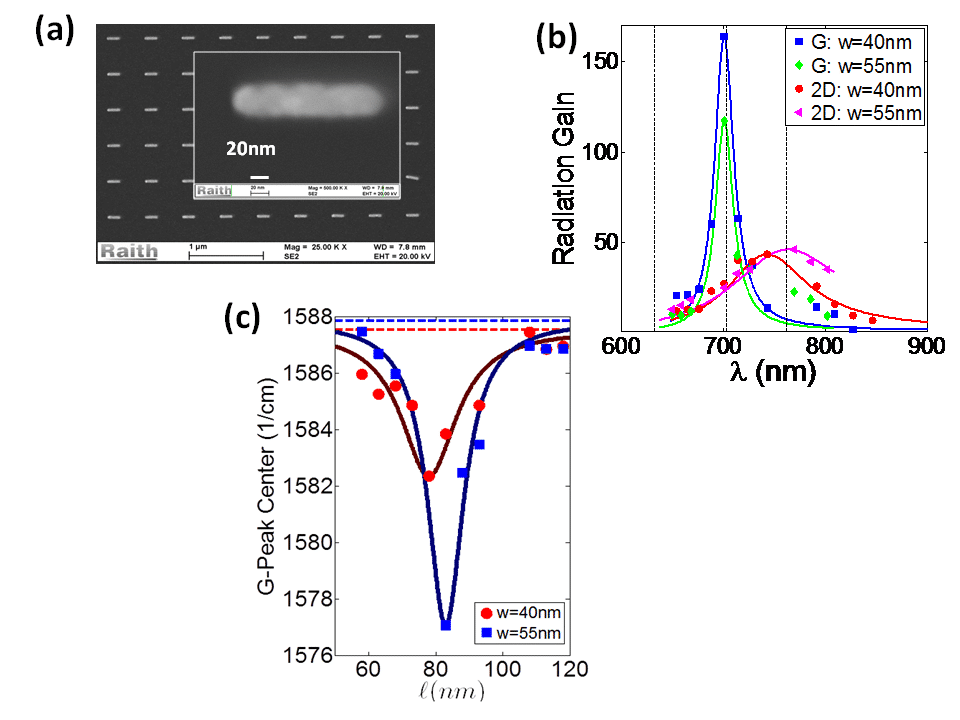
Quantum and Nonlinear Plasmonics with Graphene-Metal Nanostructures
 Surface Plasmon polaritons (SPPs) have long been utilized to enhance and confine optical fields at the nanoscale. They have been proven effective in control and enhancement of optical processes at metal-dielectric boundaries with a variety of applications ranging from (bio)sensing and optoelectronic devices to integrated photonics and nonlinear optics. Nevertheless, the recent emergence of two-dimensional (2D) materials has enabled a novel avenue of research on SPP-mediated nonlinear and quantum optical phenomena at the surface. Due to their inherent low-dimensionality, 2D materials eliminate bulk contributions which are otherwise responsible for obstruction of analogous surface effects in conventional 3D materials. Moreover, these material systems offer remarkable physical properties that are usually unavailable in conventional 3D materials. For instance, graphene, arguably the most prominent member of the 2D materials family, may interact with light over a broad range from terahertz frequencies to visible wavelengths, can provide very high charge carrier mobility, and is widely tunable by means of an external static electric field. The strong coupling between SPPs and graphene, therefore, establishes a unique platform for 2D cavity quantum electrodynamics where the graphene material system can coherently interact with SPPs in a metal plasmonic nanoresonator. This work presents the theoretical background and experimental demonstration of several examples of coherent interactions between graphene and SPPs including enhanced scattering rates, stimulated plasmon emission, and frequency pulling of natural atomic transitions [1-2]. These results demonstrate the ability to perform quantum and nonlinear optics in graphene via SPPs, and, in turn, may be used for quantum limited sensing, advanced information processing, and stimulation and manipulation of quantum emitters.
Surface Plasmon polaritons (SPPs) have long been utilized to enhance and confine optical fields at the nanoscale. They have been proven effective in control and enhancement of optical processes at metal-dielectric boundaries with a variety of applications ranging from (bio)sensing and optoelectronic devices to integrated photonics and nonlinear optics. Nevertheless, the recent emergence of two-dimensional (2D) materials has enabled a novel avenue of research on SPP-mediated nonlinear and quantum optical phenomena at the surface. Due to their inherent low-dimensionality, 2D materials eliminate bulk contributions which are otherwise responsible for obstruction of analogous surface effects in conventional 3D materials. Moreover, these material systems offer remarkable physical properties that are usually unavailable in conventional 3D materials. For instance, graphene, arguably the most prominent member of the 2D materials family, may interact with light over a broad range from terahertz frequencies to visible wavelengths, can provide very high charge carrier mobility, and is widely tunable by means of an external static electric field. The strong coupling between SPPs and graphene, therefore, establishes a unique platform for 2D cavity quantum electrodynamics where the graphene material system can coherently interact with SPPs in a metal plasmonic nanoresonator. This work presents the theoretical background and experimental demonstration of several examples of coherent interactions between graphene and SPPs including enhanced scattering rates, stimulated plasmon emission, and frequency pulling of natural atomic transitions [1-2]. These results demonstrate the ability to perform quantum and nonlinear optics in graphene via SPPs, and, in turn, may be used for quantum limited sensing, advanced information processing, and stimulation and manipulation of quantum emitters.
Powered by Eventact EMS